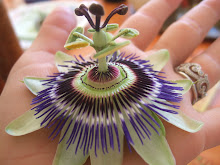Nobody wants to stand out as a tourist. Here are some tips on what to wear when
visiting Paris with both style and comfort in mind.
 |
| Lou Doillon-Vogue Magazine |
Stereotypes exist for a reason. Parisian women like to
smoke. They are often overly thin and dressed in monochrome black, gray and navy
blue, nothing that strays from the palate of an overcast sky. One flashy piece
goes a long way so don’t play the peacock. Model and musician Lou Doillon’s androgynous
style exemplifies Parisian chic with a dose of vintage flair. You can also look to boutiques like
Vanessa Bruno, Maje, Sandro and Comptoire des Cotonniers, mainstays for
“modeuses,” as they call the fashion forward gals. Check out their collections to see what is trending.
Young girls mirror their mother’s sophistication opting for
pieces like blazers and skinny jeans, none of this running around in pajamas. I’m fond of the original version of the
film Lol
(Laughing Out Loud) ’s
depiction of life in Paris. It
chronicles the coming of age struggles between a high school girl and her single
mother who share more than just clothes. Invest in timeless basics that can be worn repeatedly like
the cashmere sweater Sophie Marceau, who plays the mother, isn’t so keen to
lend out.
’s
depiction of life in Paris. It
chronicles the coming of age struggles between a high school girl and her single
mother who share more than just clothes. Invest in timeless basics that can be worn repeatedly like
the cashmere sweater Sophie Marceau, who plays the mother, isn’t so keen to
lend out.
Pay attention to your choice of footwear. Trotting all over the city in heels
only seems like a good idea in fashion week pictures in the fashion week
pictures. Your feet would never
forgive you. Opt for sensible and
stylish in the likes of ballet flats and boots fit. Keep a sweater and scarf into your tote to ward off evening
chills.
To sum it up dress comfortably, pack warm layers and keep
your wardrobe simple. French fashion magazine fixture Ines de la Fressange’s
book, Parisian Chic, is a list of dos and don’ts that is worth reading if you
are still looking for ideas on how to pull off effortlessly cool.
.jpg)





